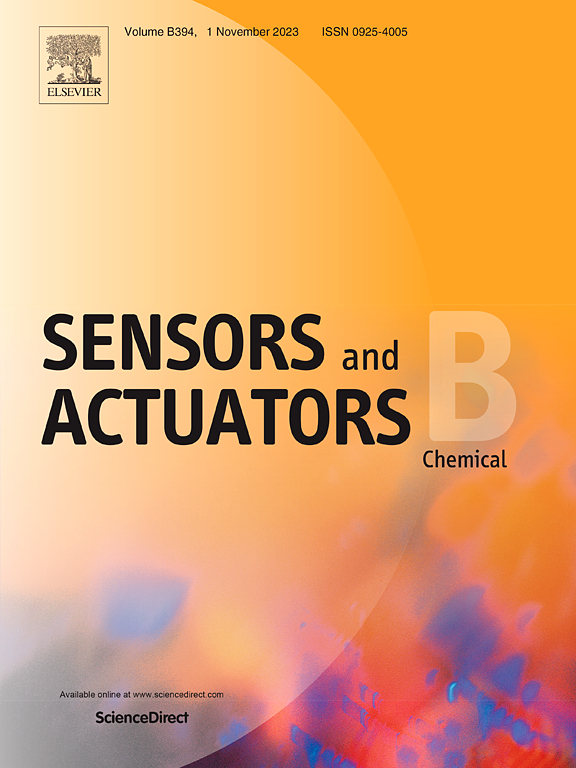用于超灵敏NO检测的同源阳离子SnO2/SnS异质结的构建
IF 8
1区 化学
Q1 CHEMISTRY, ANALYTICAL
引用次数: 0
摘要
SnO2是一种n型宽带隙(Eg=3.6 eV)金属氧化物半导体(MOS),因其成本低、无毒、制备工艺简单等优点而受到广泛研究,成为制备气体传感器最重要的敏感材料。然而,SnO2传感器仍然存在温度高、响应低的缺陷,阻碍了其实际应用。在高孔隙率的静电纺丝中空SnO2纳米管表面,采用水热生长的方法制备了SnO2/SnS复合材料。结果表明,基于异质结的SnO2/SnS气体传感器在130℃下对375 ~ 50 ppm NO的响应明显高于纯SnO2传感器,具有快速的响应/回收率(26 s/90 s)、优异的选择性(是H2S的12倍)、可重复性和稳定性(225~250 ~ 20 ppm NO)。其传感性能的增强可能是由于SnO2/SnS复合材料形成同源阳离子异质结的协同作用和其独特的微观结构,有利于有效的电荷转移,为NO的吸附和反应提供了更多的活性位点(如空位、点缺陷)。本实验为研制性能优良的SnO2气体传感器,满足有毒有害气体的检测提供了新的思路。本文章由计算机程序翻译,如有差异,请以英文原文为准。

Construction of homologous cations SnO2/SnS heterojunction for ultra-sensitive NO detection
SnO2 is an n-type wide band gap (Eg = 3.6 eV) metal oxide semiconductor (MOS) that has been widely studied, due to its low cost, non-toxicity and simple preparation process, and it has become the most important sensitive material for the preparation of gas sensors. However, the SnO2 sensor still has some defects of high operating temperature and low response, which hinders its practical application. In this work, SnO2/SnS composites were prepared by hydrothermally growing SnS nanoparticles on the surface of electrospun hollow SnO2 nanotubes with high porosity. Results show that the SnO2/SnS gas sensor based on the heterojunction has a much higher response of 375 to 50 ppm NO at 130 ℃ than that of pure SnO2 sensor, as well as rapid response/recovery (26 s/90 s), excellent selectivity (12 times that of H2S), repeatability and stability (225–250 to 20 ppm NO). Its enhanced sensing property may be attributed to the synergistic effect of the formation of homologous cations heterojunction and unique micro-structure of SnO2/SnS composite, which could facilitate efficient charge transfer and provide more active sites (such as vacancy, point defects) for NO adsorption and reaction. This experiment provides a new idea for the development of SnO2 gas sensors with excellent properties, which can meet the detection of toxic and harmful gas.
求助全文
通过发布文献求助,成功后即可免费获取论文全文。
去求助
来源期刊

Sensors and Actuators B: Chemical
工程技术-电化学
CiteScore
14.60
自引率
11.90%
发文量
1776
审稿时长
3.2 months
期刊介绍:
Sensors & Actuators, B: Chemical is an international journal focused on the research and development of chemical transducers. It covers chemical sensors and biosensors, chemical actuators, and analytical microsystems. The journal is interdisciplinary, aiming to publish original works showcasing substantial advancements beyond the current state of the art in these fields, with practical applicability to solving meaningful analytical problems. Review articles are accepted by invitation from an Editor of the journal.
 求助内容:
求助内容: 应助结果提醒方式:
应助结果提醒方式:


